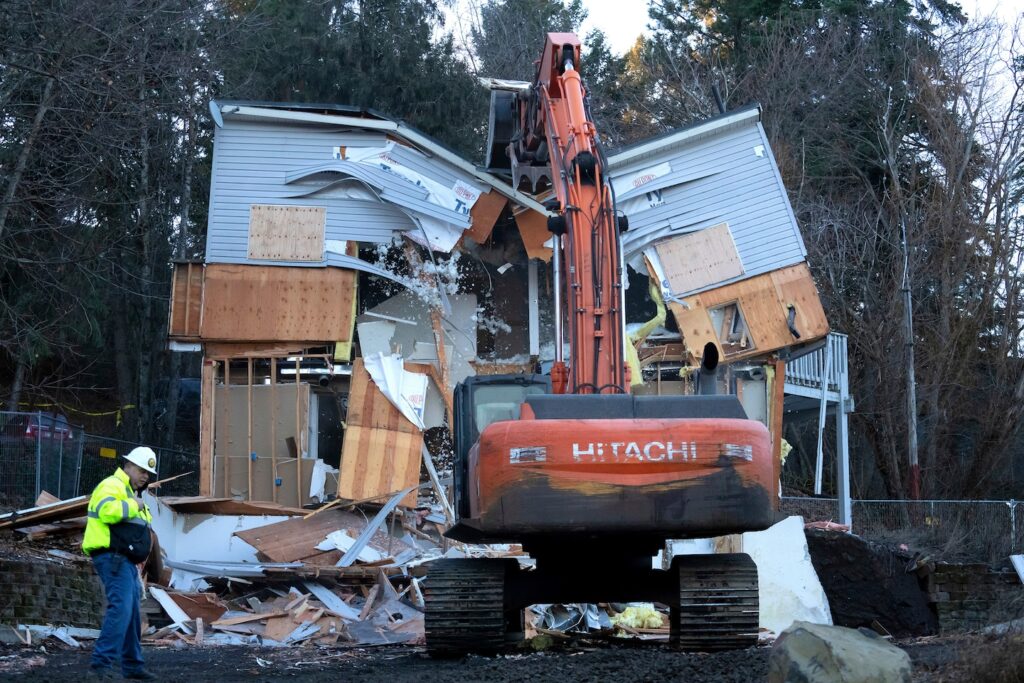Former New York Times reporter Howard Blum is the author of “When Night Breaks: A Requiem for the Idaho Student Murders,” out this week.
Even the house where the murders took place has disappeared. The three-story house on King Road in Moscow, Idaho, has been demolished. Just a stone's throw from the University of Idaho campus, it was the site of the brutal murders of four students, Ethan Chapin, Kaylee Gonsalves, Zana Kernodle and Madison Mogen, by a knife-wielding intruder in the pre-dawn darkness of November 13, 2022. But nearly a year later, bulldozers arrived at the university's command. “It's a cruel reminder of the heinous acts that took place there,” explained university president Scott Green. “It's time to remove it and continue the collective healing of our community.”
But so much for “mass healing” and exorcising ghosts. This is wishful thinking, if not a far-fetched notion. Sadly, two years after the murders, there is still no prospect of an actual trial date being set for the suspects.
Six weeks after the mysterious murder, 28-year-old criminology graduate student Brian Koberger was arrested across the country in a small, impoverished town in the Poconos, Pennsylvania. He was quickly flown back to Moscow, and a trial date was set just as quickly, but then a lengthy legal process, with one frustrating delay after another, dominated the proceedings. In fact, a hearing is scheduled for August 29th, later this summer, to hear the defense's request for a change of venue from Moscow to another location in the state. If granted, the trial, which Idaho District Judge John C. Judge recently indicated would be at least a year away, could very well be delayed for another year or two.
But why has the backlog persisted? One explanation is that this is a death penalty case, and the defense is struggling with the knowledge that their client's life is at stake. (Koberger remained silent in court last year, so the judge entered a not guilty plea on his behalf.) The defense must do whatever it takes, no matter how long it takes. In death penalty cases, it can take two or three years for a jury to reach a verdict, and the Supreme Court has ruled that the Sixth Amendment right to a speedy trial is relatively flexible in its application.
But in my view, the slow progress in Idaho is driven largely by a different logic. It is a desperate strategy, one that seems inspired by the wry wisdom of trial lawyers: If the facts are on your side, pound them. If they're not, pound the table. In this case, the defense has repeatedly pounded the table, submitting motions, discovery requests, and more pleading requests. However real, however stubborn, it is a largely empty tactic, and, more disturbingly, an unconvincing one. Justice seems irrelevant.
As a startling example, consider the supplemental alibi plea filed against Koberger in April. Nearly a year earlier, the defense had offered a terse alibi: that the defendant had been driving alone during the hours of the murders. The judge dismissively called this explanation a “so-called alibi” and “not a true alibi.” So, nine months later, a detailed explanation was offered: “Mr. Koberger had been driving in the early hours of the morning…a common pastime for hiking, jogging, and looking at the moon and stars. He was driving in the area south of Pullman, Washington, and west of Moscow, Idaho, including Wawawai Park.”
A year and a half after the murder, has the defense come up with nothing but a few elaborations of existing testimony? No witnesses? No supporting technical data from cell tower triangulation or security cameras? All it has is the uncorroborated statement of a graduate student who was alone, stargazing in a deserted country park on a cloudy, cold pre-dawn morning when the murder occurred?
Ann Taylor, the veteran public defender hired to defend Koberger, rarely misses an opportunity to publicly state her belief in her client's innocence, even placing her hand protectively on his shoulder in court, and her colleague Elisa Massos said at a recent hearing that it was an “honor” to represent Koberger. But I can't help but wonder why, if Koberger's defense team is so adamant about his innocence, they aren't doing everything they can to let the world know that a mass murderer is on the loose while the wrong man is in prison and may remain there for years.
This situation is exacerbated and infuriating by the highly restrictive judicial gag order on the events surrounding the murders: those with solid knowledge of this horrific incident – law enforcement, the lawyers working on the case, and representatives of the victim's family – are prohibited from speaking to the media. As a result, the factual vacuum has been filled with rumors, misinformation, and deliberate lies, as is often the case in the hateful blogs that abound across the Internet.
The problem is that this great and inescapable past cannot simply be bound in shackles of silence — or bulldozed away. Without the satisfying knowledge that trials and verdicts bring, without the exoneration of reason and faith and purpose that understanding brings, things will never make sense, either to the families of the victims or to the still-wary victims in that once-friendly Idaho college town.



